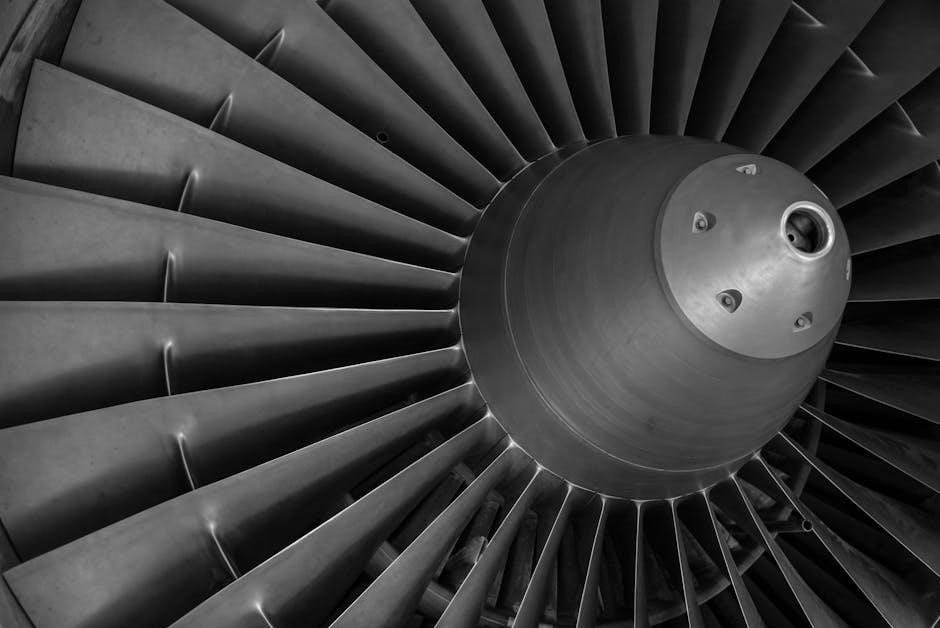engine guide
Learning about engine guide is essential for car owners, providing comprehensive overview of engine types, components, and systems, using internal combustion engine and car science concepts effectively always.
Understanding Car Engine Basics
Understanding car engine basics is crucial for any car owner, as it helps to identify potential issues and perform routine maintenance. The internal combustion engine is a complex system, consisting of various components that work together to generate power. Car science plays a significant role in understanding how engines work, and it is essential to learn about the different types of engines, including inline and V engines. By grasping these fundamental concepts, car owners can better appreciate the intricacies of their vehicle’s engine and make informed decisions when it comes to maintenance and repairs. Additionally, learning about car engine basics can help to improve overall vehicle performance and extend the lifespan of the engine. With a solid understanding of car engine basics, car owners can take a more proactive approach to caring for their vehicle. This knowledge is essential for all car owners.
Types of Car Engines
Car engines come in various types, including inline, V, and flat engines, each with unique characteristics and applications, using different technologies and designs always effectively.
Inline Engine and V Engine
An inline engine has cylinders aligned in a straight line, while a V engine has them arranged in a V shape, with each configuration affecting engine performance and vehicle design.
The inline engine is typically more compact and lighter, making it suitable for smaller vehicles, while the V engine provides more power and torque, often used in larger vehicles.
Both types of engines have their own strengths and weaknesses, and the choice between them depends on the specific application and requirements of the vehicle, including factors such as fuel efficiency, handling, and overall driving experience, with engine guide providing more information on these topics and their differences.
Understanding the differences between inline and V engines is essential for car enthusiasts and owners, as it can impact their driving experience and vehicle maintenance, and engine guide can provide more details on this subject.

Four Stroke Engine
Four stroke engine operates using intake, compression, power, and exhaust strokes, completing a cycle, with engine guide explaining the process in detail always and effectively online.
How Four Stroke Engine Works
The four stroke engine works by completing a cycle of intake, compression, power, and exhaust strokes, with each stroke playing a crucial role in the engine’s operation. The intake stroke draws in air and fuel, while the compression stroke compresses the mixture, preparing it for ignition. The power stroke occurs when the spark plug ignites the fuel, causing the piston to move and generate power. Finally, the exhaust stroke expels the exhaust gases from the cylinder, allowing the cycle to repeat. This process is repeated in each cylinder of the engine, resulting in a smooth and efficient operation. The engine guide provides a detailed explanation of this process, helping to understand the intricacies of the four stroke engine and its importance in modern vehicles, with online resources available for further learning and understanding of engine guide concepts.

Car Engine Parts and Systems
Engine components include cylinders, pistons, and crankshafts, working together efficiently always.
Learning About Car Engine Components
Learning about car engine components is crucial for understanding how engines work, using online resources and tutorials to gain knowledge. The engine is made up of various parts, including cylinders, pistons, and crankshafts, which work together to generate power. Additionally, components such as valves, camshafts, and timing belts play important roles in the engine’s operation. By studying these components and their functions, individuals can gain a deeper understanding of engine mechanics and improve their ability to perform maintenance and repairs. This knowledge can also help individuals to identify and diagnose problems with their engine, allowing them to take corrective action and prevent further damage. Overall, learning about car engine components is an essential part of engine education and can be beneficial for car owners and enthusiasts alike, providing a solid foundation for further learning and exploration.
Engine Maintenance and Troubleshooting
Regular engine maintenance and troubleshooting are critical for optimal performance and longevity always using proper techniques and tools effectively every time.
Importance of Regular Engine Maintenance
Regular engine maintenance is crucial for the longevity and performance of a vehicle, and it involves various tasks such as oil changes, filter replacements, and spark plug checks. By performing these tasks, car owners can help prevent engine damage, reduce fuel consumption, and minimize emissions. A well-maintained engine also provides a smoother and quieter ride, and it can help to prevent breakdowns and costly repairs. Furthermore, regular maintenance can help to identify potential problems early on, allowing car owners to address them before they become major issues. Overall, regular engine maintenance is essential for car owners who want to keep their vehicles running efficiently and effectively, and it can help to ensure a safe and reliable driving experience, which is why it is a key part of any engine guide or manual. Proper maintenance techniques are always recommended.

Engine Rebuilding Guide
Engine rebuilding involves disassembling and reassembling engine components, requiring specialized tools and expertise always using proper techniques and procedures effectively every time.
A Beginners Guide to Engine Rebuilding
Rebuilding an engine can be a daunting task, especially for those new to the world of cars, requiring a comprehensive understanding of engine components and systems.
A beginner’s guide to engine rebuilding provides a step-by-step approach, covering the basics of engine disassembly and reassembly, and the tools and techniques required.
The guide also covers the importance of proper cleaning and inspection of engine components, and the need for specialized tools and equipment.
Additionally, it provides tips and tricks for troubleshooting common engine problems, and the benefits of rebuilding an engine, including improved performance and fuel efficiency.
Overall, a beginner’s guide to engine rebuilding is an essential resource for anyone looking to rebuild their engine, providing a thorough understanding of the process and the skills required to do it successfully and effectively always.

Engine Performance and Upgrades
Upgrading engine components and systems improves performance, increasing horsepower and torque, using advanced technologies and techniques effectively always and efficiently every time online.
Upgrading Engine for Better Performance
Upgrading engine components can significantly improve performance, increasing horsepower and torque. This can be achieved by installing high-performance camshafts, pistons, and crankshafts. Additionally, upgrading the engine’s computer system and fuel injectors can also enhance performance. Many car owners also opt to install turbochargers or superchargers to force more air into the engine, resulting in increased power output. Furthermore, upgrading the engine’s exhaust system can also improve performance by reducing backpressure and allowing the engine to breathe more efficiently. By upgrading these components, car owners can enjoy better acceleration, faster speeds, and a more responsive engine. Overall, upgrading an engine for better performance requires careful planning and execution, but can result in a more enjoyable and exhilarating driving experience. Using online resources and consulting with experts can help car owners make informed decisions about engine upgrades.
